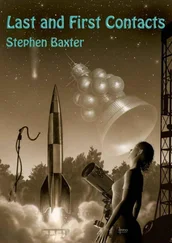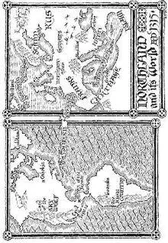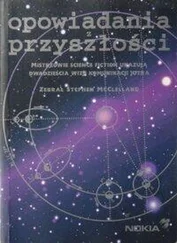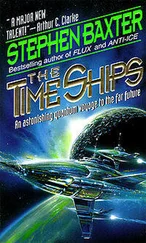And superconductors can be used to generate lift: to defy gravity.
A superconductor in a magnetic field has a remarkable property called “perfect diamagnetism”; it expels the magnetic field from its interior by creating an electrical current running on its surface. The magnetic field reacts by pushing back at the superconductor. This is called the Meissner effect, and was first discovered in 1933—and it is presumably the effect we see holding up the lump on Selfridge’s desk, as the magnetic pressure balances gravity.
This effect, “magnetic levitation”—“maglev”—can be harnessed as a friction-free load-bearing mechanism. You could imagine using it for frictionless bearings and flywheels. Larger-scale industrial applications could include lifting heavy weights, and running trains on frictionless tracks. Maglev trains are mentioned in a deleted scene in the 2007 script for Avatar . In fact maglev trains have already been trialled, though using only conventional electrical conductors. In Japan in 2003 such a train reached a speed of nearly six hundred kilometres per hour, faster than the record set by conventional trains. With no friction from the track, the main resistance to the train’s motion comes from the air; if it were run in an evacuated tunnel it’s thought that such a train could reach speeds of thousands of kilometres an hour. This might be very useful on the airless moon, where you could build a “mass driver,” an idea of Arthur C. Clarke’s, basically a train so fast it could take off into orbit…
So superconductivity is a real phenomenon, and superconductors do indeed have enormous industrial potential. The trouble with the first superconductors, however, was that it took extreme cold to trigger the superconductivity in the first place. You couldn’t realistically run a maglev train track through a hundred-kilometre-long tunnel filled with liquid helium.
But unobtanium is self-evidently at room temperature, as we see when Parker Selfridge casually picks up the trophy lump from his desk without having his hand freeze solid. Is this possible?
After Onnes’ accidental discovery, the mechanism of super-conductivity took decades to unravel. In fact it had to wait for a whole new branch of physics to emerge. Once again we must approach the eerie science of the quantum.
Electrical current in a conductor is a flow of electrons. It turns out that at sufficiently low temperatures the electrons in a conductor bond into pairs, called “Cooper pairs.” (Leon Cooper was one of a team that won the 1972 Nobel Prize for figuring this out.) Like entanglement ( Chapter 11) these couplings are a typically spooky quantum-physics effect; the electrons don’t have to be physically close to each other, but they are still attached. Physicist and science-fiction author Charles Sheffield compared them to a husband and wife at a crowded party, separated yet always joined.
Crucially, each pair stops behaving like the electrons from which it is composed, and more like another class of particle entirely—called “bosons,” which includes photons, the particles that make up light. And bosons have very different properties from “fermions,” the class that includes electrons. The electron pairs become “correlated,” lined up, as if the whole of the interior of the conductor is a single quantum object. All the photons in a laser beam are correlated in the same way. The way I think of it is that in a conventional conductor the electrons, all loners, are like a jostling crowd, cramming their way through a corridor. Cooper pairs are like a Soviet march-past, synchronised, smooth and slick, and getting by with far fewer collisions with the furniture.
The trouble is, the coupling of electrons into Cooper pairs is a fragile effect that is easily destroyed by heat. For decades it was believed that no such thing as unobtanium, a room-temperature superconductor, could ever be found because of this.
So everybody was surprised when, in the 1980s, certain ceramics were discovered which can remain superconducting at the balmy temperature of ninety degrees above absolute zero—above the temperature at which nitrogen boils, let alone helium. Later, copper-oxide-based superconductors pushed the limit up to over a hundred and thirty degrees above absolute zero. The latest developments include the discovery in 2008 of iron-oxide-based superconductors working at around the same temperatures. The scientific jury is out on how this works, presumably through a high-temperature analogue of the electron-pair correlation effect seen at low temperatures. For now, the grail of a true room-temperature superconductor is still out of reach—but it’s coming closer.
For the sake of the Avatar storyline, unobtanium has some other key properties. It can exclude magnetic fields much stronger than other superconductors can cope with—in a strong enough field most superconductors eventually break down. And it doesn’t just exclude magnetic fields, it also has the ability to anchor strong magnetic fields in parts of its structure, perhaps using non-superconducting components embedded in a superconducting matrix. This is what enables Pandora itself to support very strong magnetic fields, as we’ll see in the next chapter. None of this is entirely implausible, and unobtanium’s superconducting properties at least don’t look unobtainable, in principle, and it certainly would be highly valuable in industry.
Where did Pandora’s unobtanium come from? The answer comes from the peculiar (fictional) history of Alpha Centauri’s formation. As the system’s young stars coalesced they were perturbed by an intruder, a runaway neutron star, the surviving core of a supernova explosion, a lump composed purely of jammed-together neutrons with the mass of a star but the diameter of a city block. The neutron star, itself a source of powerful magnetic fields, ripped into the young Centauri stars, and some bizarre nuclear reactions followed. The result was a system laced with unobtanium. And that’s why unobtanium is not present in our solar system, whose origin was unperturbed by neutron stars.
But even if we could find it, could a superconducting mineral like unobtanium really lift a mountain?
The Hallelujah Mountains, ranging in size from boulders to many kilometres across, float thousands of metres above the ground. The Hallelujahs are a lovely visual concept, inspired in part by the Huang Shan Mountains of China, spectacular karst limestone formations that themselves look too delicately vertical to exist.
The Hallelujahs are lifted by the push of Pandora’s magnetic field on the superconducting unobtanium in the mountains’ rocks. The magnetic field itself is a complex product of the presence of the unobtanium in the ground. Indeed it was an early sighting of the Hallelujahs that led human scientists to suspect the presence of superconducting unobtanium in the first place.
In fiction, flying islands go back at least as far as the eccentric aerial kingdom of Laputa, in Jonathan Swift’s Gulliver’s Travels (1726). And as it happens Laputa is held up by magnetism too. It contains a magnetic rock, “a Lodestone of a prodigious Size… The stone is endued at one of its Sides with an attractive Power, and at the other with a repulsive… When the repelling Extremity points downwards, the Island mounts directly upwards” (Part Three, Chapter 3).
But just how strong would a magnetic field have to be to lift a mountain?
Consider Selfridge’s trophy unobtanium lump on his desk.
If this is equivalent to a ten-centimetre cube, say, and if the density is about that of rock on Earth (a couple of tonnes per cubic metre), then the mass is a couple of kilograms. It is held in the air by a push from a magnet in the base unit. The “push” comes from “magnetic pressure,” which is an energy density associated with the magnetic field. It really is a pressure, a force per unit area, measured in pascals (newtons per square metre) just like air pressure (which on Earth is about a hundred thousand pascals at sea level).
Читать дальше










